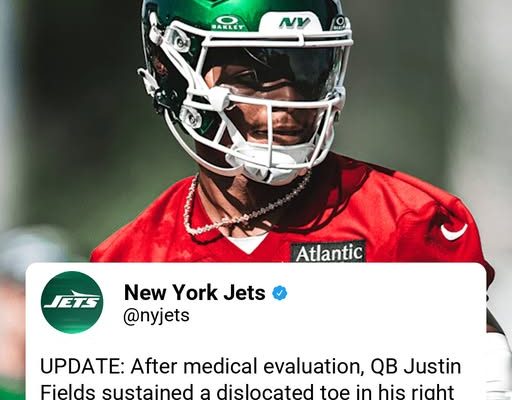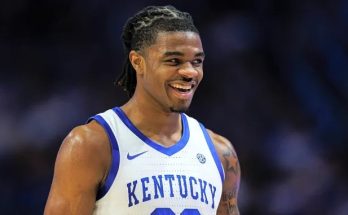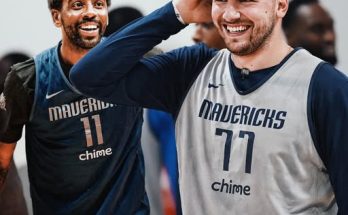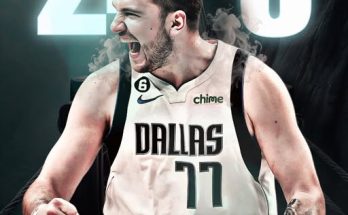The New York Jets’ preseason preparations took an unexpected hit when it was announced that quarterback Justin Fields had sustained a dislocated toe in his right foot. The injury, though not deemed long-term, immediately raised eyebrows and concerns across the league, among fans, analysts, and even inside the Jets’ locker room. According to the team’s statement, Fields is considered day-to-day, meaning there’s optimism that he could return to the field relatively soon, but nothing is guaranteed when it comes to a starting quarterback and the critical mechanics involved with his lower body.
Justin Fields’ arrival in New York brought with it a wave of excitement and cautious optimism. After his time in Chicago, Fields was given a fresh opportunity to rewrite his story with the Jets, a franchise that has struggled to find a consistent leader under center for what feels like decades. The hope was that Fields, known for his dual-threat capabilities and big-play potential, could finally stabilize the position and give the Jets a reason to believe again. But this injury, even if minor, introduces the kind of uncertainty that can derail chemistry-building and disrupt momentum during the most pivotal stretch of offseason training.
Reports indicate that the injury occurred during a routine practice drill when Fields planted awkwardly while escaping pressure during a simulated scramble. Witnesses on the scene noted an immediate grimace and a visible limp as Fields attempted to walk off the discomfort. He was quickly evaluated by team medical personnel, and initial X-rays ruled out a fracture, but further testing confirmed the toe dislocation. While this isn’t the kind of injury that will require surgery or a long rehab timeline, it’s significant enough to affect his footwork, balance, and throwing mechanics — all critical elements for a quarterback trying to learn a new system and mesh with new teammates.
What makes this injury even more impactful is the context in which it happened. The Jets have been working under a new offensive coordinator and installing tweaks to their playbook that are meant to suit Fields’ strengths. Missing even a few days of reps in these early stages can prove detrimental. Timing with receivers, understanding protection schemes, and mastering audibles at the line of scrimmage are reps that can’t be simulated in a classroom or watched on tape. Fields missing time now is less about his physical ability to return and more about the missed opportunities to grow within the system.
Coach Robert Saleh addressed the media shortly after the news broke, downplaying the severity but acknowledging the importance of caution. “We’re going to take it one day at a time,” Saleh said. “Justin is a competitor. He wants to be out there, but we have to be smart. It’s July, and we’ve got time. No need to rush him.” While Saleh’s confidence and poise were evident, the undertones were clear — the Jets cannot afford to gamble with Fields’ health, especially when the offensive line is still gelling and the franchise has lofty expectations heading into the regular season.
In a quarterback room that features a mixture of youth and experience, Fields’ status takes on even greater weight. Behind him on the depth chart, the Jets have unproven options that haven’t shown they can carry the load if thrust into the starting role long-term. Fields was not only the presumed starter, but he was also the centerpiece of the Jets’ offensive rebranding. Losing him for an extended period would force the coaching staff to either rush his return prematurely or change the offensive scheme to fit a backup — neither of which are ideal.
Fields has faced his share of adversity since entering the league. His time in Chicago was filled with flashes of brilliance marred by inconsistent play and limited offensive support. Coming to New York was a chance to prove the doubters wrong, to show he could read defenses quickly, deliver accurate throws, and use his legs strategically without taking unnecessary punishment. This toe injury, though not career-threatening, is symbolic of the kind of obstacles he must overcome to reach that next level.
The reaction from the fan base was a mixture of concern and cautious relief. Social media lit up with fans speculating about timelines, replacements, and even revisiting the question of whether Fields was the right fit in the first place. Some voiced confidence in his toughness, recalling the many times he played through injuries in college and in Chicago. Others took a more skeptical approach, suggesting that injuries — no matter how minor — could become a pattern if not carefully managed.
Beyond the immediate implications, the dislocated toe adds to the narrative that the Jets seem to attract drama, especially at the quarterback position. From the Mark Sanchez years to Sam Darnold, and more recently Zach Wilson, the Jets have cycled through quarterbacks like a revolving door. Fields was supposed to be a reset, a stabilizing force. And while this injury doesn’t negate that possibility, it does add to the layers of unpredictability that have defined this team for years.
The good news for the Jets is that medical advancements and performance recovery protocols are better than ever. A dislocated toe, with no fracture or tendon tear, can heal relatively quickly with the right treatment — rest, ice, rehabilitation, and possibly the use of a carbon fiber plate in his cleats to stabilize the toe. Still, Fields will need to monitor any swelling, avoid aggravating the injury during walk-throughs, and prioritize the long game over immediate returns.
Teammates have rallied around Fields since the news broke. Wide receiver Garrett Wilson, who is expected to be one of Fields’ top targets this season, emphasized the importance of chemistry but also voiced confidence in the quarterback’s leadership. “We know what Justin brings to the table,” Wilson said. “This is just a bump in the road. We’re going to keep grinding, and when he’s back, we’ll pick up right where we left off.”
Defensive leader Quinnen Williams also shared thoughts, noting how Fields has earned respect in the locker room with his work ethic and willingness to lead from the front. “He’s a dog, man. Straight up,” Williams said. “You see the way he prepares, how he pushes himself and us. We’ll hold it down till he’s back.”
The coming days will be crucial. Fields will likely undergo daily evaluations, including mobility tests and pain assessments. The Jets’ training staff will work closely with the coaching staff to decide when he’s ready to participate in full-speed practices. Until then, expect backup quarterbacks to get more reps, while Fields supports from the sideline with a clipboard in hand and a walking boot possibly on his foot.
Preseason games are on the horizon, and the Jets now face the delicate balance of wanting to get Fields some game action while also ensuring he doesn’t risk re-injury. If there’s even a hint of lingering discomfort or biomechanical compensation, expect the Jets to err on the side of caution. A toe may seem minor in the grand scheme, but for a quarterback — especially one like Fields who relies heavily on footwork to buy time, reset his platform, and drive the football — it’s a vital body part that must be fully healthy.
This episode also reopens discussions about offensive line protection. Though this injury happened during a non-contact moment, it underscores how quickly things can go wrong without a clean pocket or secure footing. Fields has already taken too many hits in his short NFL career, and the Jets must ensure they’re not setting him up to fail through poor protection or hasty returns.
In the world of professional sports, injuries are part of the game, but they often carry meanings beyond the physical setback. For Fields, this is a test of resilience, of patience, and perhaps of strategic decision-making. How he, the Jets, and the fanbase respond in the coming weeks could influence not just his season, but his entire trajectory in New York.
There’s little doubt that Fields will do everything in his power to return to form. His competitiveness is legendary, dating back to his high school days in Georgia to his standout seasons at Ohio State. That fire, combined with the support of the Jets’ organization and medical team, will be his greatest asset moving forward.
So as Jets Nation holds its breath and waits for updates, the message from inside the building remains one of unity and steady focus: toe trouble or not, the season is still ahead, and Justin Fields remains central to everything they hope to achieve.



